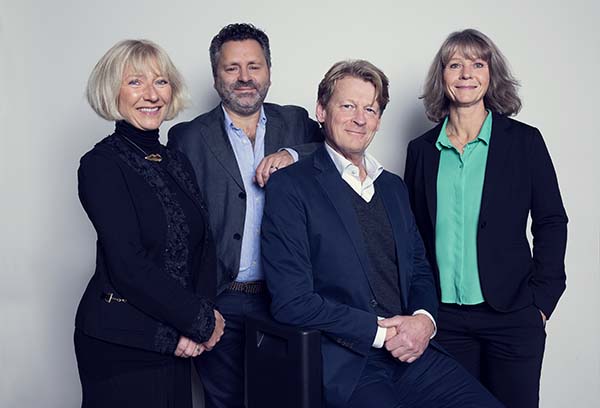

Digital events, part of the solution according to climate expert
The climate issue is acute and the human impact on the climate is obvious. On a daily basis, climate change makes itself known and has in many ways changed the playing field for companies around the world. There is a lot to suggest that it is high time to take the alarming reports seriously.
Sustainability is the main talking point of today. It is necessary that companies in all industries begin to take responsibility for their climate footprint. Understanding the risks posed by climate change is the first step in the transition to a more sustainable business. So is understanding what the climate impact of one’s own business actually looks like.
With the pandemic, the playing field changed further. Looking at the event industry, digital solutions have been enormously important during the pandemic. Development plays an equally vital role from an environmental perspective. But how important is the relocation of our events to digital platforms, and why?
Hybrid and digital events have become very common and will become more common. Here, the digital platforms will play an important role, as the largest sources of emissions are significantly reduced, says climate expert Marie Gustafsson, Principal Consultant at South Pole.
The digital transition – is important for both the companies and the earth’s future
South Pole helps companies and organizations around the world achieve their climate goals through innovative solutions and industry-specific services. They have been calculating emissions from physical events since long before covid-19 paralyzed the world and have now analyzed the digital events during the pandemic.
The development of arranging sustainable events goes in the direction of working with sustainability in general. I have spent many years in the climate field and have worked at South Pole for 3.5 years. In these years alone an enormous development has taken place.
The digital transition has been going on for many years now. Even before the pandemic, the transition was still around the corner for some businesses. Switching digitally during the pandemic has been important for the survival of many companies and necessary in many ways to save the earth’s resources. Sustainability issues are today involved at the board level, as opposed to just a couple of years ago when the commitment looked different.
Today, sustainability issues are more entrenched at board level than before, while only a few years ago there was often a single fighter who pushed the issue forward. Nowadays, it is part of the strategic management to work with climate and sustainability issues. I see a sincere interest and motivation from the companies and not that it is just an obligation. It must continue in that direction and companies need to take a holistic approach.
Digital event platforms – contribute to a significant reduction of the largest emissions at events
During the pandemic, many direct and indirect emissions have decreased as physical events have not been arranged to the same extent. Now society is slowly opening up again and most things are returning to normal. But what exactly is the new normal after the pandemic?
This is very interesting! Hybrid and digital events have become very common and will become more common. Here, the digital event platforms will play an important role, as the largest emissions are significantly reduced. Having a consolidated experience of events makes it easier to analyze and drive positive change. It will be interesting to follow the development and a future with hybrid and digital events.
Some emissions in connection with events are very obvious, while others are not as obvious. If you want to reduce your climate impact, it is therefore important to make a calculation of your climate footprint. From that, you have to do what you can, especially where the large emissions are located.
The emission sources are of course different for physical events, in comparison with those that take place in the digital arena. Physical events include transport and travel for all participants. This is the largest source of emissions at 90 percent of all events and the absolutely dominant part we look at. But also factors such as food for all participants, activities, materials and more are counted as sources of emissions at the physical events.
If you instead look at digital events, it is emissions from, for example, electricity consumption from IT and services that you must take into account. In the IT industry, there are better and easier conditions to quickly reduce their emissions by switching to renewable electricity, compared with the aviation industry where it is much more difficult to electrify and use biofuel.
If you lack prior knowledge, the priority might easily be to think environmentally conscious regarding the small things, such as the contents of a goodie bag. This is of course good, but if you want to make a proper calculation of your climate footprint, it requires more than that, according to Marie.
How you calculate your climate footprint before events
Making an analysis of the climate footprint at a specific event – or for the entire business – is a fundamental part of getting an honest picture of what kind of emissions the company has. This way you will be able to address them correctly, as well as make an action plan with the right priorities to act on.
Climate expert Marie Gustafsson, Principal Consultant at South Pole, explains that it is initially necessary to make a first review of what is to be done and what it means in detail, in order to then collect data for each emission source.
Four tips to start with
To begin with, you should go through all the activities – such as the planning before the event, the implementation of it and the follow-up work – to get an overview of what is planned. What does travel look like? Do participants need to stay in a hotel? Which premises should be used? What activities are planned? What food should be served?
Then, to make a good calculation, you have to collect data for the parts that are important. Look at factors such as: which routes are flown and whether it is economy or business, how much electricity will be used, and how many meals will be served – or even better how much bread will be served. Based on this, it is possible to calculate emissions.
The journeys are most important to count on and take into account. Therefore, you should consider where you place your event. Depending on the country and location, the type of electricity used is another important part to take into account. If you are arranging a digital event instead, you need, in addition to taking into account which electricity you choose, to collect data on how many people are participating, server solutions, etc.
If for some reason you can not collect data, it is possible to use templates. This requires the help of an expert.

Book a short review with one of our event experts.
TALK TO AN EVENT EXPERT